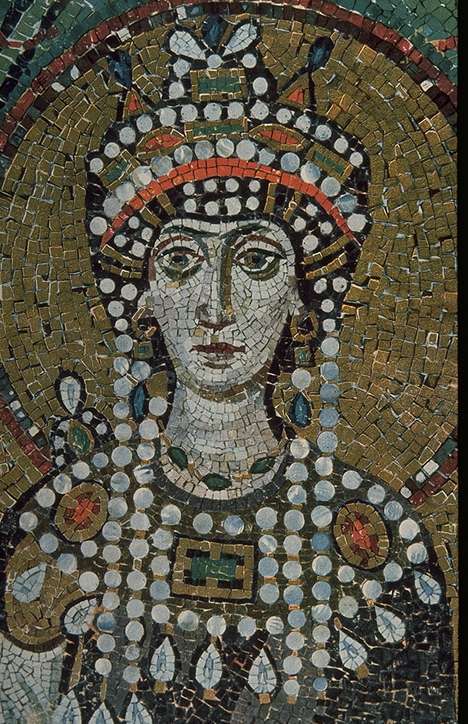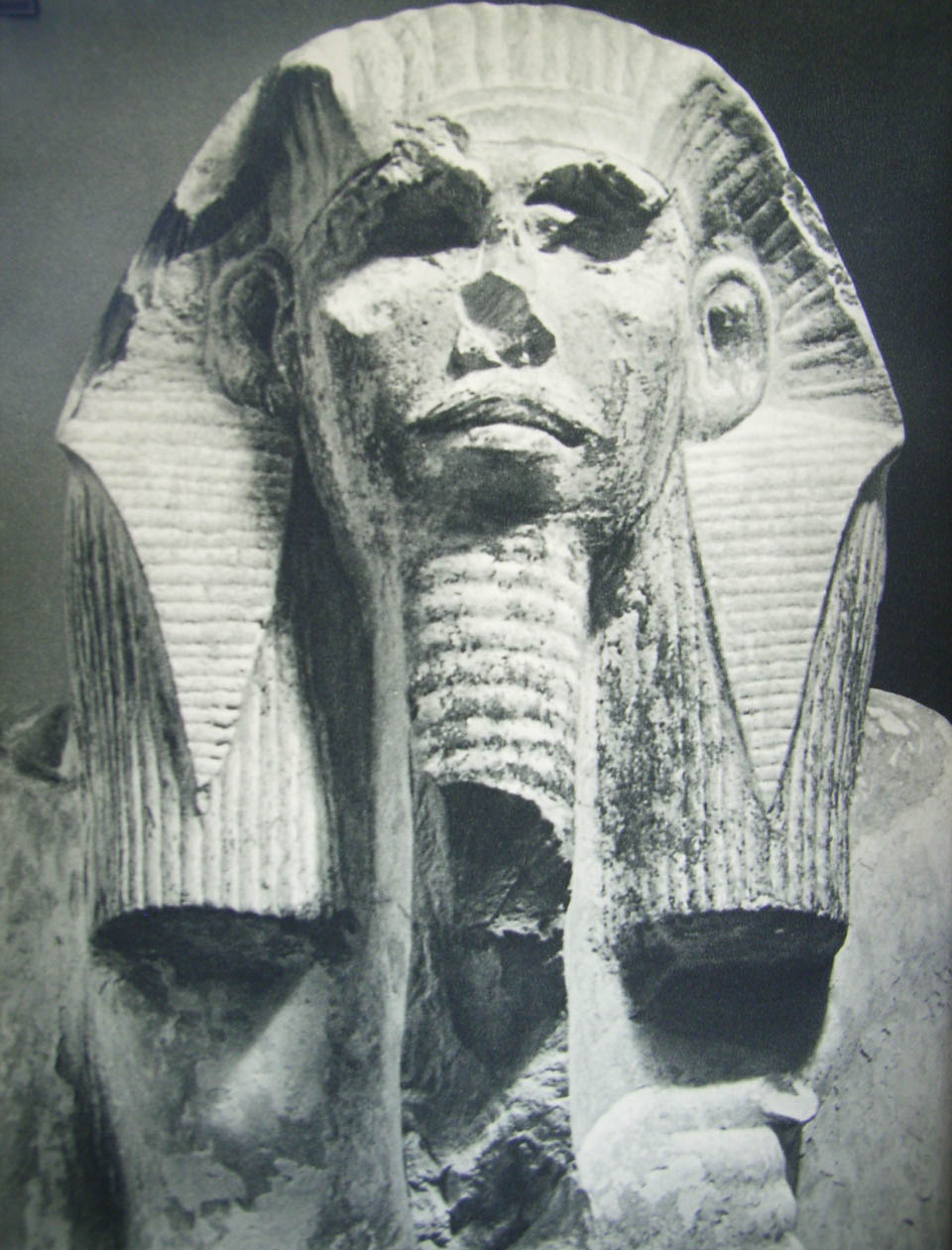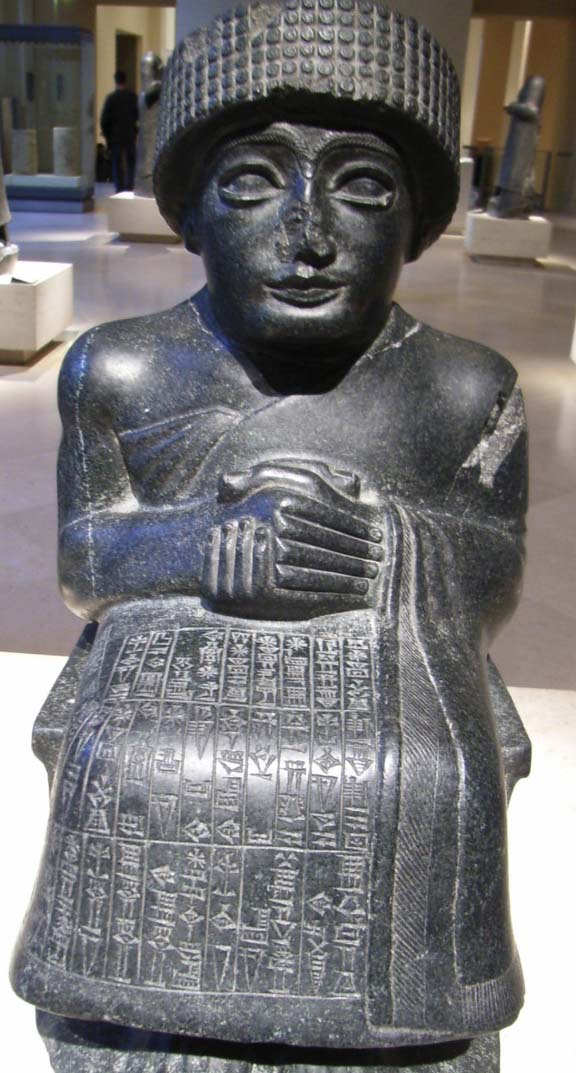Art, Time and Metamorphosis: A Revolutionary Aspect of André Malraux’s Theory of Art.
The
topic I wish like to address today is one which, it seems to me, should
occupy
a position of major importance on the agenda of modern aesthetics but
which,
oddly enough, is almost completely neglected.
The
topic is the relationship between art and time – or to
use an
equivalent phrase, the temporal nature of art.
What
do I mean by the relationship between art and time?
Well, what I do not
mean is the portrayal
of time within this or that particular work –
for example in Proust’s A la Recherche du
temps perdu as compared with, say, the picaresque novel. That is a perfectly
legitimate topic of
interest of course, but my focus today lies elsewhere.
I want to talk about the general
relationship between art and time – the temporal nature of
art in general.* Given
that such a thing
as art exists – and that much I’m going to take for granted – do we
think that
its temporal nature differs in some important way from that of other
products
of human activity? And
if so how? And why
might this be important?
The
question is by no means strange or esoteric.
There
is one view of the relationship between art and time
that is so familiar
to us that it has almost become a cliché, an idea that we employ
very
often
but to which we rarely give a second thought.
This
is the idea that art – or at least great art – has a
special capacity
to, as we say, ‘endure’ or ‘last’.
We
don’t mean by this, of course, that works of art have a special power
of physical endurance: we know that
they
are as vulnerable to floods, fires, earthquakes or simple neglect as
anything
else. We mean,
rather, that certain works
— Shakespeare’s Hamlet, the Mona Lisa,
Mozart’s Magic Flute,
for example
— seem to have a capacity not only to impress their contemporaries but
also to
exert a fascination on subsequent ages, while so many other works have
lost whatever
appeal they may once have had and have sunk into oblivion. We mean, more broadly,
that unlike so many
other things that the passage of time renders obsolete and void of
interest – ranging
from the latest fashion to beliefs about the nature of the universe –
certain
works of art seem to have a power
to preserve
their vitality, and to escape
consignment to what André Malraux aptly terms ‘the
charnel house of dead values’.[1] In effect they seem to
have a power to transcend time.
In a sense, all
this is a
statement of the obvious: as I say, the idea
that a great work of art ‘endures’ is so familiar to us that we rarely
give it
a second thought. Yet once we begin to reflect on the proposition, it
is surely
a perplexing one – a proposition that puzzles the understanding. How, after all, could
certain works
‘transcend time’? What precisely does that mean? What property could
such works
possess that might bring that about? How does it operate? And what significance might we
place on
this apparent power to defy the vicissitudes of time?
We are not, of
course, the
first to have wondered about the temporal
nature of art and it is useful, I think, to remind ourselves of the
leading
ideas on the subject that our Western cultural inheritance has
bequeathed to
us.
Perhaps the most
influential idea owes its power, if not its origins as
well, to the Renaissance. How
was it
possible, Renaissance minds asked themselves, that the rediscovered
works of
Greece and Rome – forgotten for a thousand years and more – seemed
suddenly
radiant with life, as if, somehow, they had defied the passage of time?
What
power did these works possess that could make such a thing possible? The answer the Renaissance
gave has echoed
down the centuries and is still very much part of our intellectual
heritage. The works
of Antiquity, like
those that the Renaissance artists were themselves bringing into being,
were,
it was said, possessed of a demiurgic power called “beauty”, and
beauty, like
the goddess Venus so often chosen as its supreme representative, is
“immortal”.
The works of Antiquity, like the paintings of a Botticelli or a
Raphael, were
all works of “art” — a term on which the Renaissance was conferring a
new significance — and each of them bore triumphant witness to
the power
of beauty to accede to an eternal
realm, impervious to the corrosive powers of time. This thinking was
not just
the preserve of a handful of intellectuals.
It
had all the force of a reigning ideology — as powerful
and as widely
accepted as, say, Marxist and post-Marxist explanations of history have
been
for large numbers of people over much of the past century. We find the idea again and
again in
Shakespeare’s sonnets, for example, and it was still very much alive in
the
mid-nineteenth century when Théophile
Gautier could write in his poem called ‘Art’:
All things pass. Sturdy art
Alone is
eternal;
The sculpted
bust
Outlives the State.[2]
As I have suggested, the impression this pattern of thinking has left on Western culture has been deep and lasting. In the eighteenth century, when, somewhat belatedly, philosophers began to offer a systematic account of art — to be christened “aesthetics” — the notion of beauty was at the core of its explanation, and writers took it for granted that the finest works foregathered, along with those of Greece and Rome, in a timeless or eternal realm of balance, order and harmony, sometimes called the realm of the beau idéal. And whether we are aware of it or not, the influence of this thinking is still very much with us today. Our contemporary vocabulary has changed somewhat, and references to Greek mythology are usually omitted, but for many critics and aestheticians today, art is still explicable essentially in terms of ‘beauty’; and while most writers would, in our hard-headed, down-to-earth, age, probably shrink from terms such as ‘immortal’, ‘eternal’ or maybe even ‘timeless’, there remains, as I have said, a widespread, if seldom clearly formulated, assumption that a true work of art is one that possesses a capacity to ‘last’ or ‘endure’, which its weaker rivals do not.The
question that confronts us today is whether this explanation of the
temporal
nature of art remains satisfactory and, if not, what account might we
put in
its place. Given
that, as we have said,
art appears to possess some special capacity to endure – to transcend
time – and given also that we
are looking for an explanation and that we’re not, like much
contemporary
aesthetics, simply turning our backs on the problem, do we think that
the
traditional explanation I have outlined – the notion that art is
beauty, and
beauty is timeless – remains plausible for us today?
And if we don’t think that, what explanation
might we now offer for the apparent
power of art to transcend time? How
in
short might we explain the temporal
nature of art?
I
believe the traditional explanation I have described is no longer
viable and
that there are at least three reasons why this is so.
I shall outline them briefly in increasing
order of importance.
First,
the last hundred or so years has witnessed the progressive
disintegration of
the idea that art is the manifestation of ideal beauty – an idea which,
as I
have said, has been a mainstay of the traditional explanation. The notion of a beau idéal
began to lose plausibility in the early decades of the
twentieth century when the category ‘art’ started to encompass works
which no
longer seemed to have any connection with such an ideal — that is, when
the
boundaries of art began to extend beyond Raphael, Titian and their
post-Renaissance successors to take in the worlds of (for example)
Pre-Columbian gods and African masks, modern artists such as Picasso,
and
pre-Renaissance Western art such as Romanesque sculpture or medieval
paintings
such as the Isenheim Altarpiece. I
am aware that some contemporary advocates
of the theory of beauty attempt expand the theory to accommodate works
such as
these, but the result is a concept of beauty that seems to me so vague
and
anaemic that it ceases to be of any explanatory value.
The
second assault on the traditional explanation of the temporal nature of
art has
come from the modern fascination with the idea of history – a major
focus of
nineteenth century thought and one that, in many respects, we continue
to
share. Though
seldom stated plainly and
simply, the threat this idea poses to the traditional explanation is
perfectly
straightforward. If
something is
understood
as timeless, then essentially it is exempt from change: it is
unaffected by the
vicissitudes of time and circumstance.
If
art is timeless, it must therefore lie essentially outside
history and beyond the reach of
history’s explanatory categories.
Naturally
enough, this implication is not at all congenial
to theorists
who place history at the centre of their thinking
and
it was, for example, quite unacceptable
to Hegel, who placed art firmly within
the ambit of history and made it the subject of a teleology — ending,
indeed,
with art’s demise; and of course the assaults on the notion of
timelessness
continued with Taine and Marx and a series of post-Marxist thinkers up
to the
present day, all of whom have declined to exempt art from the
historical
process (however conceived). Art,
on the
historical view of things, is fundamentally a creature of its times. No less — and perhaps even
more — than other
human activities, it bears the marks of its times, and plays its part
in
strengthening or subverting dominant ideologies and social arrangements. To locate its essential
qualities in a
changeless, ‘eternal’ realm removed from the flow of history would from
this
point of view, be an ‘idealist’ illusion, false to art and history
alike.
The
third attack on the traditional explanation seems to me the most
damaging of
all.
The
nature of the problem quickly becomes clear if we take account of the full extent of the realm of art as we
know it today. “Art”
today no longer
simply means, as it did for several centuries, the works of the
post-Renaissance West plus selected works of
A
further example may perhaps help clarify the point.
The so-called “pier statues” of biblical
figures on the exterior of the cathedral of Chartres are today
considered to be
among the treasures of world art, on a par with works such as the
frescos at
Ajanta, the best of Egyptian or Khmer sculpture, and the works of
Donatello or
Michelangelo. Yet
from Raphael onwards all medieval
art, including
***
Now,
as I mentioned at the outset, the question of the temporal nature of
art has
been almost entirely neglected in contemporary aesthetics so it is very
difficult to locate books or articles which address the issues I have
been
discussing. To my
knowledge, the only
exception to this is the French writer and art theorist, André
Malraux, for
whom the relationship between art and time is a matter of central
concern. Much of
what I have already said
today is
informed by Malraux’s theory of art but in the brief time remaining I
would
like to say a little more about his thinking on this matter.
Malraux’s
firmly rejects the proposition that the temporal nature of art can be
explained
by the notion of timelessness, and one of the central themes of his
theory of
art is that art transcends time not because it is unaffected by the
vicissitudes of time and circumstance, but through a process of metamorphosis in which time and change
play an intrinsic and inevitable part.
If
time had permitted I would have liked to provide a full
explanation
of this aspect of Malraux’s thinking showing how it emerges as a
necessary
consequence of the basic propositions on which his theory of art rests. This is especially worth
doing because some
of Malraux’s commentators – E H Gombrich is a prime example – have
claimed that
he is not a systematic thinker but merely a purveyor of random
insights, an opinion which, I believe, is demonstrably
false. Unfortunately,
however, time will
not permit
the kind of in-depth explanation a refutation of that kind would
require, so I
thought I would confine myself to certain key propositions about the
temporal
nature of art that emerge from Malraux’s thinking and simply trust that
you
will accept my assertion that, like all other aspects of his thinking
about
art, they form part of one coherent, systematic theory.
As
I have said, Malraux argues that art transcends time through a process
of
change – of metamorphosis. To
quote one
of his formulations, he writes in the third volume of The
Metamorphosis of the Gods,
entitled L’Intemporel, that
‘Metamorphosis is the very life of the work of art in time, one of its
specific
characteristics.’[4] What exactly does this
mean? One way of
clarifying his position is to
distinguish it from a very familiar claim about the interpretation of
works of
art with which it might perhaps be confused.
We
have all no doubt encountered the idea that a
particular work of art
may be given different interpretations at different periods of time –
that a
play by Shakespeare, for example, can be interpreted in a variety of
ways and
that successive periods of history are likely to see it in different
lights and
discover different meanings in it.
Well,
one might say, is this all Malraux is saying when he writes that
metamorphosis
‘is the very life of the work of art in time’?
Is
he simply rehashing this familiar truism?
The
answer is an unequivocal no,
because the similarity between this and Malraux’s position is purely
superficial. Malraux
certainly accepts
that different historical periods may discover different meanings in a
work of
art and perhaps regard it with varying degrees of importance –
including, quite
possibly, none at all. But
by itself, if
we reflect on it, that familiar proposition tells us nothing
specific about the temporal nature of art.
It
is perfectly compatible, for example, with
the claim, which is quite at variance with Malraux’s position, that the
work of
art is something whose nature is fixed ‘once and for all’; for one need
only
assume that different interpretations to which a work lends itself is a
specific, fixed range of meanings
that the artist, consciously or unconsciously, gave it at its moment of
birth. Malraux does
not leave the matter
unresolved in this way. He
is arguing
that the work of art is something which,
by its very nature – and not simply as a result of accidental
circumstance
– has a changing significance. It
is a
domain of meaning that is inherently
in a state of continual change. ‘Metamorphosis’,
he writes in The
Voices of Silence, ‘is not an accident, it is the very law of
life
of the
work of art.’[5]
It follows then that a work’s significance at its moment of birth is only that – its original
significance –
and one that will, whether the artist knows
it or not, inevitably disappear over time, to be replaced by another. The work’s moment of
creation, whatever
effect it may then produce, and whatever function it may then perform
(which in
many cultures may not even be as
‘work of art’ as we have noted) is only a point of departure
from which
it sets out on a journey of metamorphosis.
Its
nature is precisely that of an adventure launched onto
the unknown
seas of the human future : like an adventure, it is not proof against
time and
changing circumstance (as the concept of timelessness would require)
and there
may well be times when it fades into obscurity, possibly for centuries,
even
millennia. But like
an adventure, it is
pregnant with possibility: unlike
the
mere historical object which fades into oblivion, it is capable of
‘living
again’, albeit with a significance quite different from that which it
originally possessed.
Thus,
a work may, for example, begin its life as a sacred object within a
particular
religious context – a Pharaoh’s ‘double’, for instance, placed in his
mortuary
chapel to receive the offerings of his subjects.
Subsequently,
when the beliefs on which that
significance depended have perished, the object may recede into
obscurity, as
did the works of Ancient Egypt for nearly two millennia, or as
Byzantine art
did after Giotto, or as Giotto himself faded from view for nearly three
centuries after Leonardo and Raphael.
In
such cases, it is as if the work inhabits, for a time, a kind of limbo
in which
it evokes at best indifference, at worst, contempt.
But unlike the mere historical object, it is
capable of resurrection, and it returns to life if and when, with the
passing
of time and its own capacity for metamorphosis, it can re-emerge, but
with a
significance quite different from that which it originally possessed. Thus the works of Ancient
Egypt, Byzantium,
and Giotto ceased in time to be sacred images, created for tomb,
basilica, and
chapel, and became, after periods of obscurity, ‘works of art’ in the
sense
that phrase has for us today. Seen
in
this light, the destiny of any great work, Malraux argues, is
inseparable from
a dialogue – though at times a
dialogue of the deaf – between the changing human present, and the
work’s own,
continually changing significance.
We
recognise,
he writes,
That
if Time
cannot permanently silence a work of genius it is not
because the work prevails against Time by perpetuating its original
language
but because it constrains us to listen to a language constantly
modified,
sometimes forgotten – as it were an echo answering each century’s
changing
voice – and what the great work of art sustains is not a monologue,
however
authoritative, but an invincible dialogue.[6]
One
such dialogue which is very familiar to us is that which led to the
revival of
Greek and Roman art during the Renaissance, and Malraux’s explanation
of the
temporal nature of art allows us to see this event in a very different
light
from that in which it is conventionally portrayed.
Renaissance art, we are often told, was stimulated
by the discovery of the works of Antiquity.
But
what exactly does ‘discovery’ mean in this context?
Malraux asks.[7] Traditional accounts
sometimes give the
impression that the works of
The
most dramatic example of such a dialogue has, of course, taken place in
our own
time which has seen the resuscitation, as works of art, of objects from
the
four corners of the earth and from the depths of ancient history and
prehistory, large numbers from cultures in which the notion of art was
quite
unknown. The
significance of this
unprecedented event, and the reasons why it occurred when it did, are
explored
at length in Malraux’s books on art and I could not hope to do justice
to those
matters today. The
key point once again,
however, is that he sees this development in terms of dialogue and
metamorphosis, resulting this time in what he does not hesitate to call
‘another Renaissance’,[10]
recognising of course that the scope of our modern resuscitations
dwarfs those
of the Renaissance.
***
Malraux’s
theory of art poses a series of major
challenges to modern aesthetics, and there is much more to be said on
that
topic than I have covered today. Among
the many challenges, however, his explanation of the temporal nature of
art
stands out as one of the most striking and important.
As we have seen, the traditional
explanations
we have inherited simply
do not account for the facts as we know them.
Art
clearly does not live ‘eternally’, and nor is it
swallowed up
irrevocably, as a mere historical phenomenon, into ‘the charnel house
of dead
values’. And
neither of those
explanations even begins to explain why, when resurrected, so many of
the
objects we today regard as art have assumed a significance quite
different from
that which they originally held – that a god or an ancestor figure, for
example, has become ‘art’. Malraux’s
theory of art provides a solution to this problem.
He allows to see why art ‘conquers time’ –
why we find (for example) Sumerian religious figures thousands of years
old in
our art museums (and not just as archaeological artefacts in history museums); yet at the same time
he frees us from having to believe what now seems a manifest absurdity
– that
art is eternal.
As
I mentioned earlier, the question of the temporal nature of art has
been pushed
very much to the margins of modern aesthetics.
Indeed,
the last major contribution to the topic was
arguably that of Hegel
who placed art firmly in the domain of history.
Broadly
speaking, the twentieth and twenty-first centuries
have had to
make do either with variations on Hegel – Arthur Danto is one example[11]
– or with Marxist and post-Marxist accounts which, again, situate art
essentially within the domain of history.
The
other alternative has been the almost complete
indifference to the
question shown by contemporary analytic aesthetics.
Meanwhile,
however, over the course of the past hundred years, and almost as if to
mock
the inadequacy of these explanations, art museums around the world have
been
filling up with objects from distant times and other cultures which
seem to
have escaped history (because, though long-forgotten, they have ‘come
alive’
for us today) but which are self-evidently not timeless (because they
have been
resurrected after long periods of oblivion with significances quite
different
from those which they originally held).
In
other words, art museums around the world have been
filling up with
objects whose very presence there poses
the problem of the relationship between art and time in an acute and
very conspicuous way.
The
outstanding
value of Malraux’s contribution is not only
that he
recognises the pressing need to address this matter, but that he
provides a
solution that fits the facts as we know them.
He
has given us a fundamentally new way of understanding
the
relationship between art and time, which, unlike the explanations
bequeathed to
us by our Western cultural heritage, makes sense of the world of art as
we now
know it. His
account of the temporal
nature of art thus stands out as a landmark achievement in the theory
of
art. It is no
exaggeration, in my
view, to describe his contribution in this area as revolutionary.
* In other words the external
relation between art and time - the relation between art and
the passing of time - with history in the broadest sense.
[1] André
Malraux, Les Voix du silence,
Ecrits sur l’art (I), Jean-Yves Tadié, ed., 2 vols (Paris:
Gallimard, 2004)
890.
[2] Théophile Gautier: Émaux et Camées, 1852. ‘L’Art’.
[3] “How comprehensively Gothic art was ignored by
the
nineteenth
century!” André
Malraux writes.
“Théophile
Gautier, passing by
[4] André Malraux, La
Métamorphose des dieux: L’Intemporel, Ecrits sur l'art (II),
ed.
Henri Godard (Paris: Gallimard, 2004), 971.
[5] Malraux, Les
Voix du silence, Ecrits
sur l'art (I), 264.
[6] Ibid, 264
[7] André Malraux, "Appendice aux
'Voix
du silence': Premières ébauches inédits," in Ecrits
sur l'Art, ed. Jean-Yves Tadié (Paris:
Gallimard, 2004),
904.
[8] Malraux, Les
Voix du silence, Ecrits
sur l'art (I), 261.
[9] Ibid., 484.
[10] The Psychology of art,
Museum
without walls, 142.
[11] Part of Danto’s theory of art consists of a reinterpretation of Hegel’s end of art thesis. See, for example, Arthur Danto, After the End of Art (Princeton: Princeton University Press, 1997), esp. 30-34.
This
paper was delivered at the annual conference of The Nordic Society of
Aesthetics in Uppsala University, Sweden, 29 May to 1 June 2008.
It outlines, in an abbreviated form, some of the arguments I advance in my book Art and Time.
We
don’t mean that works of art have a special power
of physical endurance... We
mean that certain
works
— Shakespeare’s Hamlet, the Mona Lisa,
Mozart’s Magic Flute,
for example
— seem to have a capacity not only to impress their contemporaries but
also to
exert a fascination on subsequent ages...
... once we begin to reflect on the proposition, it is surely a perplexing one – a proposition that puzzles the understanding. How, after all, could certain works ‘transcend time’?

Birth of Venus – Botticelli (detail)
... what explanation might we now offer for the apparent power of art to transcend time? How might we explain the temporal nature of art?

Raphael
– Madonna del
Belvedere

Voodoo mask, Fon people,
Art today encompasses the works of a wide range of non-Western cultures, many ancient civilizations, and even Palaeolithic times stretching back to the caves of

The
Empress Theodora,
Christ
in Majesty,
Moissac – Romanesque art
The statues at

Biblical figures - Chartres
... the question of the temporal nature of art has been almost entirely neglected in contemporary aesthetics ...
‘Metamorphosis is the very life of the work of art in time, one of its specific characteristics.’
Malraux, The Metamorphosis of the Gods, L’Intemporel.
The work’s moment of creation, whatever effect it may then produce, and whatever function it may then perform (which in many cultures may not even be as ‘work of art’) is only a point of departure from which it sets out on a journey of metamorphosis.
Thus, a work may, for example, begin its life as a sacred object within a particular religious context – a Pharaoh’s ‘double’, for instance, placed in his mortuary chapel to receive the offerings of his subjects. Subsequently, when the beliefs on which that significance depended have perished, the object may recede into obscurity, as did the works of Ancient Egypt for nearly two millennia ... But unlike the mere historical object, it is capable of resurrection, and it returns to life if and when, with the passing of time and its own capacity for metamorphosis, it can re-emerge, but with a significance quite different from that which it originally possessed.

Pharaoh
Djoser – Third
Dynasty
'... if Time cannot permanently silence a work of genius it is not because the work prevails against Time by perpetuating its original language ...'
Malraux - The Voices of Silence
In effect, Malraux’s notion of metamorphosis and dialogue stands traditional thinking about the Renaissance on its head. ‘It is at the call of living forms’, he argues, ‘that dead forms are recalled to life.' ‘In art, the Renaissance produced Antiquity quite as much as Antiquity produced the Renaissance.’
He allows to see why art ‘conquers time’ – why we find (for example) Sumerian religious figures thousands of years old in our art museums (and not just as archaeological artefacts in in history museums); yet at the same time he frees us from having to believe what now seems a manifest absurdity – that art is eternal.

Gudea,
Prince of
... over the course of the past hundred years, and almost as if to mock the inadequacy of our existing explanations, art museums around the world have been filling up with objects whose very presence there poses the problem of the relationship between art and time in an acute and very conspicuous way.
Malraux's account of the temporal nature of art stands out as a landmark achievement in the theory of art. It is no exaggeration to describe his contribution in this area as revolutionary.